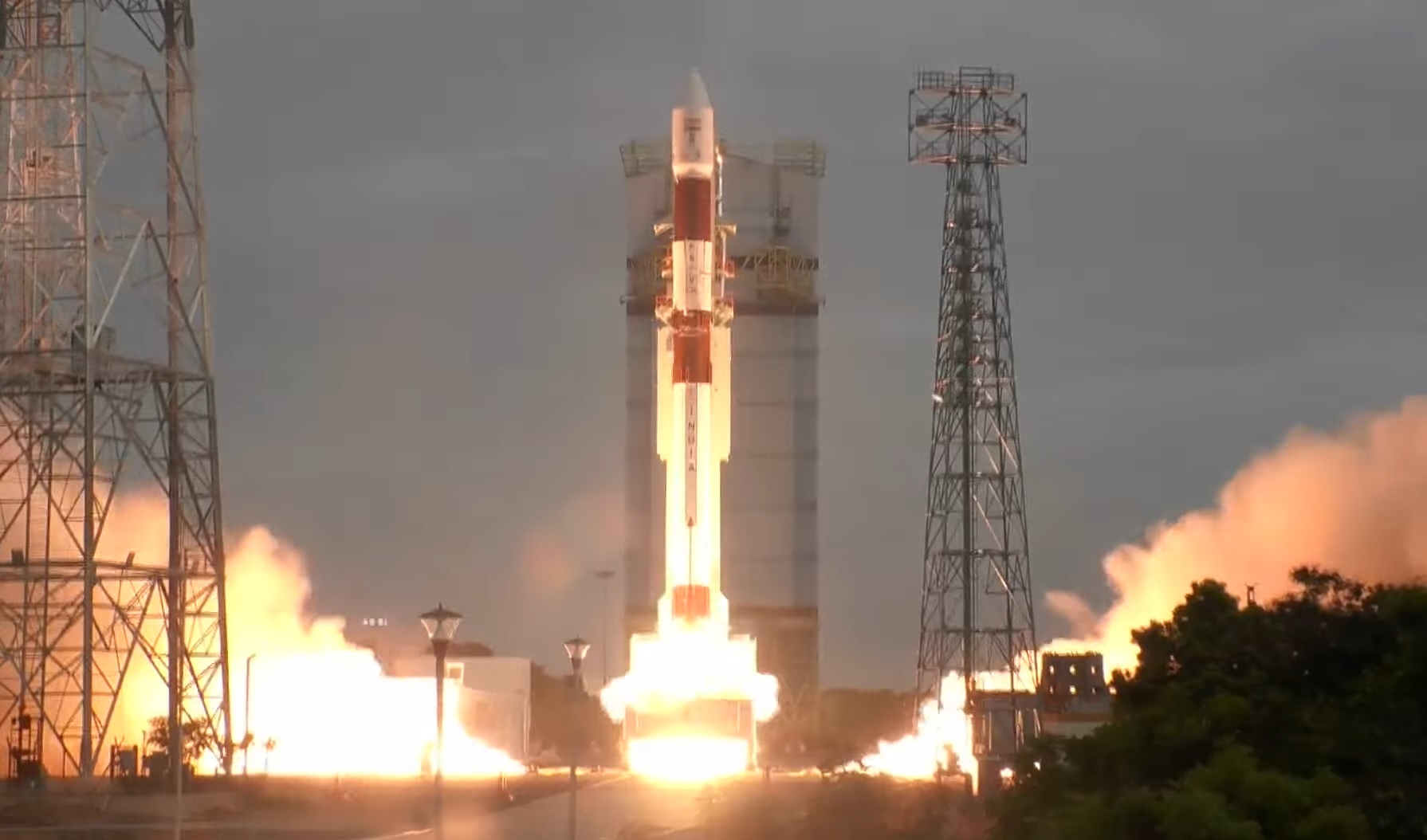SEOUL, South Korea — India successfully launched seven Singaporean satellites into low Earth orbit July 29 on its workhorse PSLV rocket. It was the nation’s sixth orbital launch of the year, which were all successful, and occurred two weeks after the launch of the Indian robotic lunar lander Chandrayaan-3, which is flying toward the lunar south pole for a soft-landing attempt between Aug. 23 and 24.
The four-stage PSLV rocket lifted off from Satish Dhawan Space Centre at 10:01 p.m. Eastern as scheduled. Live footage showed the rocket soaring into the air with bright yellow exhaust shooting out of its first-stage engines.
The launch proceeded as planned: the first stage booster separated about two minutes after liftoff. The separation of its payload fairing took place 73 seconds later, followed by the second stage 77 seconds later and the third stage 320 seconds later. The upper stage pushed the satellites to the intended orbit of 536 kilometers above the Earth and deployed them about 20 minutes after liftoff.
“Congratulations, PSLV-C56 carrying seven satellites including the primary satellite DS-SAR and 6 co-passenger satellites have been successfully placed in the right orbit,” ISRO Director Sreedhara Panicker Somanath said soon after deployment. “I want to congratulate the customers sponsored by the government of Singapore for having this mission on board PSLV.”
The director said the upper stage would be “brought back to a lower orbit of 300 kilometers” in the coming hours as part of efforts to reduce its lifespan in orbit. He said another PSLV launch is scheduled for early September, but did not provide further details.
The launch was conducted by ISRO under a contract with New Space India Limited (NSIL), a commercial arm of the space agency.
The primary payload was a 360-kilogram remote-sending satellite, named DS-SAR, which was developed in partnership with the Singapore government’s Defence Science and Technology Agency (DSTA) and ST Engineering, a Singaporean tech company. The satellite carries a synthetic aperture radar developed by Israel Aerospace Industries (IAI). This enables DS-SAR to provide for all-weather day and night coverage, and is capable of imaging at 1-meter resolution at full polarimetry, according to Indian space agency ISRO. Once operational, the spacecraft will cater to the imagery needs of various Singapore government agencies and ST Engineering’s commercial customers.
The six co-passengers were VELOX-AM, a technology demonstration microsatellite; ARCADE, an experimental satellite for atmospheric coupling and dynamics exploration; SCOOB-II, a nanosatellite flying a technology demonstrator payload; NuLIoN by NuSpace, an advanced nanosatellite enabling seamless IoT connectivity in both urban & remote locations; Galassia-2, a nanosatellite orbiting at low earth orbit; and ORB-12 STRIDER, a satellite developed under international collaboration.
Chandrayaan-3 en route to late August landing attempt

Meanwhile, Chandrayaan-3 lunar lander, launched July 14, is sailing smoothly toward the lunar south pole after successfully executing its fifth and final Earth-bound orbit-raising maneuver July 25. As of July 27, the spacecraft was in a 1,27,609 km x 236 km orbit around the Earth, preparing for its Aug. 1 Translunar Injection (TLI).
If everything goes as planned, the spacecraft is scheduled to arrive in lunar orbit Aug. 5. Once in lunar orbit, the propulsion module will be jettisoned. The Vikram lander will begin an autonomous descent, expected on Aug. 23 or 24, to a targeted landing site near the lunar South Pole. The landing site is located at 69.37 degrees south latitude and 32.35 degrees east longitude.
A successful landing will make India the fourth country in the world to achieve a lunar landing, following the U.S., the former Soviet Union and China. The mission would also be the first to land near the lunar south pole. No previous Moon mission has landed at a lower latitude.
